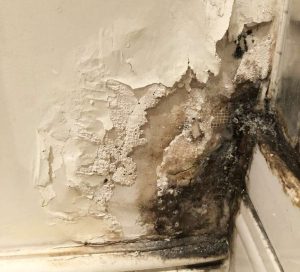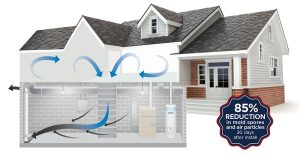Crawlspaces are an often-neglected area of many homes, yet they play a crucial role in the overall health and structural integrity of the house. A wet or damp crawlspace can lead to various problems, including mold growth, structural damage, and compromised indoor air quality. In this comprehensive article, we will explore the importance of crawlspace waterproofing, the common issues that lead to moisture problems, and the various techniques to ensure your crawlspace remains dry and healthy.
1. The Importance of Crawlspace Waterproofing
Crawlspace waterproofing is essential for several reasons:
Structural Integrity: A wet or damp crawlspace can lead to wood rot, structural damage, and a weakened foundation, which can
Mold and Mildew Prevention: Moisture in crawlspaces provides an ideal environment for mold and mildew growth, which can contribute to health problems, including allergies and respiratory issues.
Pest Control: Damp crawlspaces attract pests such as termites, ants, and rodents, which can cause damage and health concerns.
Energy Efficiency: A waterproofed crawlspace can help maintain a consistent temperature in your home, reducing heating and cooling costs.
2. Common Crawlspace Moisture Issues
Before delving into crawlspace waterproofing techniques, it’s essential to understand the common causes of moisture problems:
Groundwater Seepage: High water tables or poor drainage around your home can cause groundwater to infiltrate the crawlspace through the foundation walls and floor.
Surface Water Infiltration: Rainwater, melted snow, or runoff from the roof can enter the crawlspace through cracks or gaps in the foundation, vents, or access doors.
Condensation: In humid climates or poorly ventilated crawlspaces, condensation can form on the walls, pipes, and air ducts, introducing moisture.
Plumbing Leaks: Leaky pipes, fixtures, or sewer lines can introduce water into the crawlspace.
Poor Ventilation: Inadequate ventilation can trap moisture in the crawlspace, making it more susceptible to moisture issues.
3. Crawlspace Waterproofing Techniques
Vapor Barriers
Vapor barriers are one of the most effective ways to prevent moisture from entering the crawlspace. These barriers consist of heavy-duty plastic or foil sheets that are laid on the crawlspace floor and attached to the foundation walls. Vapor barriers act as a physical barrier, preventing moisture from rising into the crawlspace from the ground.
Installation: The vapor barrier should be laid across the entire crawlspace floor and attached to the walls with adhesive or mechanical fasteners. Seams should be properly sealed to ensure a continuous barrier.
Benefits: Vapor barriers are cost-effective and can significantly reduce moisture infiltration. They also help prevent radon gas intrusion.
Crawlspace Encapsulation
Crawlspace encapsulation is a more comprehensive approach to moisture control. It involves sealing the entire crawlspace, including the walls, floor, and foundation vents. Here’s how it’s done:
Sealing Vents: Crawlspace vents are sealed to prevent outside air and moisture from entering. This helps maintain a consistent temperature and humidity level in the crawlspace.
Installing Vapor Barrier: A heavy-duty vapor barrier is installed on the floor and attached to the walls, as described earlier.
Sealing Foundation Walls: The walls are sealed using a moisture-resistant material, such as a vapor barrier or specialized crawlspace liner.
Dehumidification: A dehumidifier may be installed to maintain optimal humidity levels in the crawlspace.
Crawlspace encapsulation is a more involved and costly solution, but it provides comprehensive protection against moisture issues, reduces energy costs, and improves indoor air quality.
Proper Drainage
To prevent groundwater infiltration, an effective drainage system should be installed around the exterior of the crawlspace. This system is designed to divert water away from the foundation. Common components include:
French Drains: A network of perforated pipes surrounded by gravel is installed around the foundation. These pipes collect and redirect water away from the crawlspace.
Sloped Grading: The landscape around your home should be graded to slope away from the foundation, ensuring that water naturally flows away from the crawlspace.
Foundation Repairs
If your crawlspace moisture issues are related to foundation cracks or damage, it’s crucial to address these problems as a part of the waterproofing process. Foundation repairs may include:
Sealing Cracks: Any visible cracks in the foundation should be sealed to prevent water infiltration.
Reinforcing Foundation: For more severe foundation damage, it may be necessary to reinforce or repair the foundation walls.
Proper Ventilation
Ventilation is essential for maintaining an optimal crawlspace environment. Adequate ventilation helps control humidity levels and prevents the buildup of moisture. Ventilation strategies include:
Foundation Vents: Ensure that foundation vents are in good working condition and are properly spaced to allow for adequate airflow.
Mechanical Ventilation: In cases where natural ventilation is insufficient, mechanical ventilation systems can be installed to promote airflow and prevent moisture buildup.
Sump Pump Installation
In areas prone to excessive groundwater infiltration, the installation of a sump pump can be a valuable addition to your crawlspace waterproofing system. A sump pump is designed to remove water that collects in a sump pit and discharge it away from the foundation.
Installation: A sump pit is excavated in the lowest point of the crawlspace, and a sump pump is placed in the pit. The pump is equipped with a float switch that activates it when the water level rises.
Backup System: Consider installing a battery backup system for the sump pump to ensure it continues functioning during power outages.
Monitoring Systems
Crawlspace monitoring systems can help you keep an eye on moisture levels and provide early warning of any potential issues. These systems typically include sensors that detect moisture, temperature, and humidity.
Remote Monitoring: Some systems offer remote monitoring through smartphones or computers, allowing you to check on your crawlspace’s conditions from anywhere.
Alerts: The system can send alerts if it detects abnormal moisture levels, enabling you to take action promptly.
4. Maintenance and Inspection
Crawlspace waterproofing is not a one-and-done solution; it requires ongoing maintenance and inspection to ensure its effectiveness. Regularly check your crawlspace for signs of moisture, mold, and damage. Here are some maintenance tips:
- Check the vapor barrier for tears or damage, and repair or replace it as needed.
- Inspect the crawlspace walls and foundation for any signs of cracks or damage.
- Ensure that vents and vent wells are in good condition and functioning correctly.
- Keep the crawlspace clean and free of debris to prevent blockages in the drainage system.
Crawlspace waterproofing is a critical aspect of maintaining a dry and healthy home. Whether you opt for vapor barriers, crawlspace encapsulation, proper drainage, or a combination of techniques, addressing moisture issues is crucial to prevent structural damage, mold growth, and other related problems. Regular maintenance and inspections are essential to ensure that your waterproofing system remains effective over time. By investing in crawlspace waterproofing, you can create a safer and more comfortable living environment for you and your.

Everdry Waterproofing is one of the nation’s largest Basement waterproofing companies. Everdry specializes in basement waterproofing, crawlspace waterproofing, foundation repair and basement ventilation. Our patented, safe and 100% effective waterproofing method can be used on foundations consisting of poured concrete, block, brick, stone, red clay tile plus crawlspaces and slabs. We have been in business for more than 40 years and have over 85,000 “RAVING FANS.”
